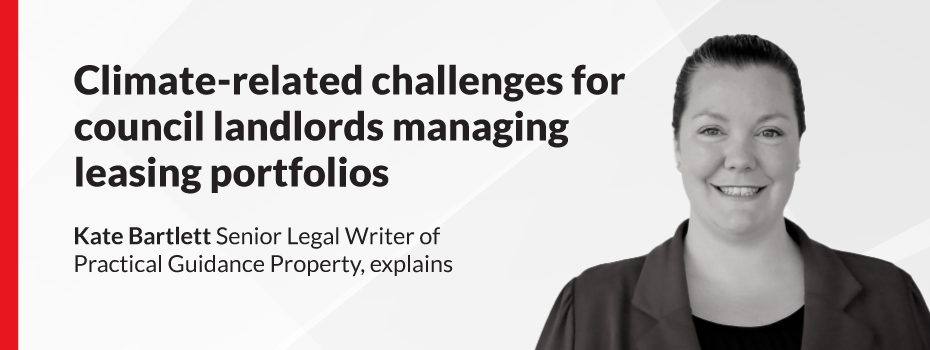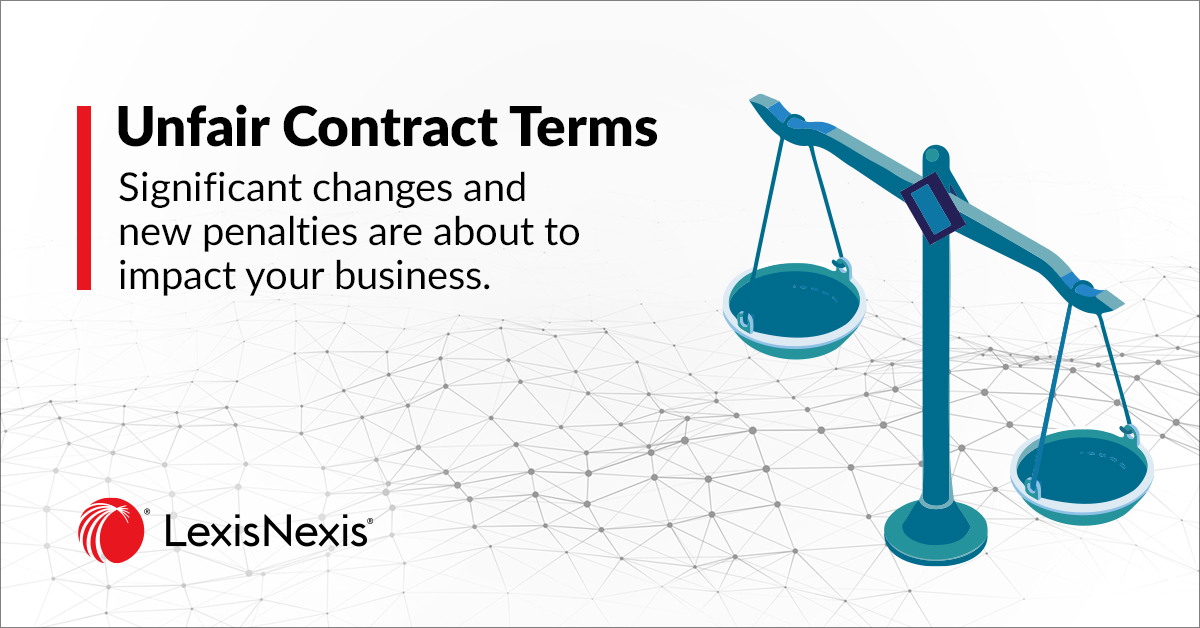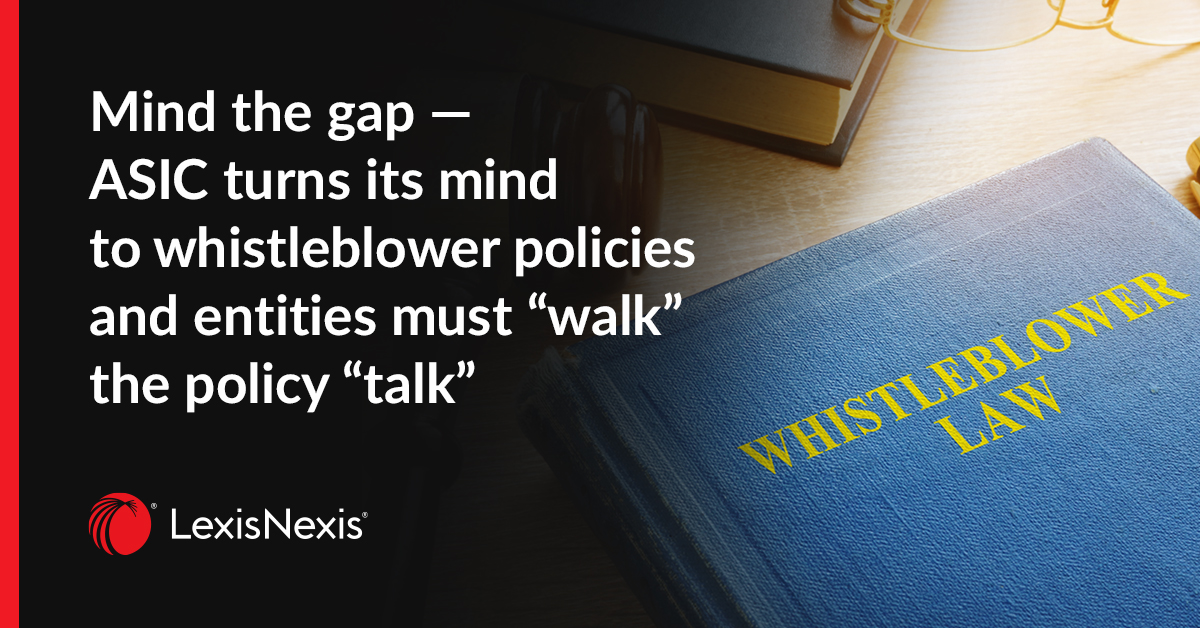
Climate-related challenges for council landlords managing leasing portfolios
07 November 2022 04:54
By Kate Bartlett, Senior Legal Writer, LexisNexis Australia, Practical Guidance, Property
Climate change will continue to present challenges for council landlords in how they manage their leasing portfolios. Two of the CSIRO’s climate change projections are that extreme rainfall events will become more intense and that tropical cyclones, while possibly occurring less often, will become more intense.[1] With those and other predicted climate change impacts, council landlords might expect more frequently occurring weather-induced damage to the buildings and facilities in their leasing portfolios.
Where damage to leased premises is not caused by a tenant (or someone the tenant is responsible for), a landlord is presented with some difficult choices that have long‑term practical, legal and financial consequences. Such choices should be made only after a landlord knows what their and their tenant’s rights and obligations are under the lease and at law. For local government landlords, such choices are also affected by other important factors. For example, if a damaged premises was a community centre co-occupied by numerous community, maternal and child health services, decisions about the repair and reinstatement of the premises may be driven by community need, more than by what the defined legal rights of the parties are under the lease.
Where premises is severely damaged or destroyed, it is important to quickly assess what the rights and obligations of the parties are to repair or reinstate of the premises and whether either party can terminate the lease in such circumstances. These assessments usually occur after debris removal and interim works to make safe a premise or services to the premises have been commenced. These assessments are critical to undertake as early as possible because actions undertaken by one party may affect the rights of the parties to a lease, particularly where the lease or the law may require one thing, and the parties, or one of them, do or set out to do another.
A typical example would be where council-owned land and buildings are leased to a sporting club. A tropical cyclone has cut access to the premises from a road, damaged the façade of the clubhouse building and partially removed its roof, destroyed out-buildings (including a 25-year-old public amenity block), and cut the electricity and water supply and sewerage services to the premises.
In situations like this, where neither the landlord or the tenant has caused the damage to the premises, knowing what rights or obligations the parties have, both under the lease and at law, to require the repair and reinstatement of the premises so that the tenant can once again use of the premises as intended under the lease, or, to end the lease, will help the landlord to assess and decide upon the courses of action available to it.
Which courses of action are available will most often depend largely upon the terms of the lease. Many leases require the tenant to keep the premises in the same condition as at the start of the lease, subject to fair wear and tear, and to repair any damage caused by the tenant and those under the control of the tenant. Some leases will require a tenant repair any the premises irrespective of the cause of the damage. Many leases do not include a requirement that the landlord undertakes structural repairs, either at all or within a certain timeframe, and may do not require the landlord to reinstate the premises where it is damaged by someone other than the tenant. Where there is a reinstatement clause, often a landlord will have a certain timeframe within which to start and then complete the reinstatement works, and most such clauses would allow the landlord to terminate the lease where the damage to the premises is significant.
Where a lease is silent on what the landlord’s repair or reinstatement obligations are when a premise is destroyed or is silent on what is to happen when a premises is destroyed, except for in some limited situations where there has been statutory intervention,[2] the law does not oblige the landlord to rebuild or to reinstate damaged premises. Unless the lease requires a landlord to reinstate the premises, then the tenant has no right to require that the landlord does so.[3]
In our example situation, let us assume that the lease included a general maintenance and repair covenant that required the tenant to keep the premises and the services and access to the premises in the same condition as at the start of the lease, including any structural repairs, irrespective of the cause of the damage or need for repair. Such a covenant will likely require the tenant to repair the façade of the clubhouse and reinstate the roof to the clubhouse. But, unless the covenant specified that the tenant must construct a new building in place of a completely destroyed building, the same covenant is unlikely to require the tenant to construct a new public amenities block in place of the destroyed 25-year-old amenity block.
Before a landlord can safely take a decision to either commence works to reinstate the premises, or to seek to end the lease, it is necessary that the landlord understand the lease covenants relating to repair, reinstatement or termination due to damaged premises, and any other relevant lease clauses which may impact the parties’ rights in the situation (eg, insurance obligations under the lease, or a force majeure clause included within the lease).
Managing large leasing portfolios presents resourcing challenges for most local governments, even those with access to internal legal, property and facilities management professionals. In the aftermath of an extreme weather event, where many premises may be damaged, getting timely input on leasing-related issues can be further challenged by competing demands coming from other service areas.
These factors make it more critical than ever for councils to have ready access to the right tools to help them navigate issues as they arise within their property and leasing portfolios.
LexisNexis Practical Guidance - Property provides detailed guidance notes that put leasing law and issues into a practical context, including:
- Detailed guidance notes on the leasing issues discussed in this article (eg, Destruction, damage or inaccessibility of building or premises and Landlords’ covenants included in a lease).
- Other detailed guidance notes covering all aspects of leasing in the Leases, Retail Leases and Residential tenancies topics.
LexisNexis Practical Guidance - Property also provides guidance notes, precedents, checklists and toolkits to help councils manage their leasing portfolios, today and into the future, including
- Precedent commercial lease and retail lease and other precedent leasing suite documents, including, deed of consent and assignment of lease or sublease , heads of agreement / lease proposal, deed of variation of lease or sublease, landlord’s notices of acceptance and non-acceptance of tenant’s exercise of option, landlord’s default notice to tenant, rent concession and rent review clauses and notices, and more.
- Guidance notes on managing and leasing crown land in the Crown land subtopic of the Rural transactions topic.
- Checklists relevant to leasing such as the Acting for landlord — Checklist before entering into and finalising a commercial or retail lease.
- Property Frequent Tasks Tool, which links to all of the guidance notes, checklists, precedents and forms used to guide legal and property practitioners through completing each of the most frequent tasks carried out in their day-to-day practice.
- Signing tool, an easy-to-use tool that quickly produces signature blocks for agreements or deeds.
- COVID-19 Property Toolkit, a guide to the legal developments in commercial and retail leasing (as well as sales and purchases and other property-functions), with links to necessary resources, precedents and other critical information.
- Latest Legal Updates providing prompt and practical guidance about legal developments, regulatory changes and topical property issues.
For more information, see the Leases and Retail Leases Topics on LexisNexis Practical Guidance - Property.
Latest Articles
-
 3 tips for banking and finance lawyers when responding to an ASIC enquiry, and how to avoid misleading or deceptive conduct.
3 tips for banking and finance lawyers when responding to an ASIC enquiry, and how to avoid misleading or deceptive conduct. -
 Significant increases to competition and consumer law penalties have commenced and sweeping reforms to the unfair contract terms regime will follow in 12 months’ time.
Significant increases to competition and consumer law penalties have commenced and sweeping reforms to the unfair contract terms regime will follow in 12 months’ time. -
 The Australian Securities and Investments Commission (ASIC) is calling on Australian CEOs, from public companies, large proprietary companies and corporate superannuation trustees to review their whistleblower policies and processes to ensure compliance with private sector whistleblower laws.
The Australian Securities and Investments Commission (ASIC) is calling on Australian CEOs, from public companies, large proprietary companies and corporate superannuation trustees to review their whistleblower policies and processes to ensure compliance with private sector whistleblower laws.
Practical Guidance
Your one-stop solution for accurate legal answers from Australian legal experts. Tools, practically focused guidance notes, checklists, precedents, and training materials support and streamline your legal workflow.
LEARN MORE LexisNexis
LexisNexis